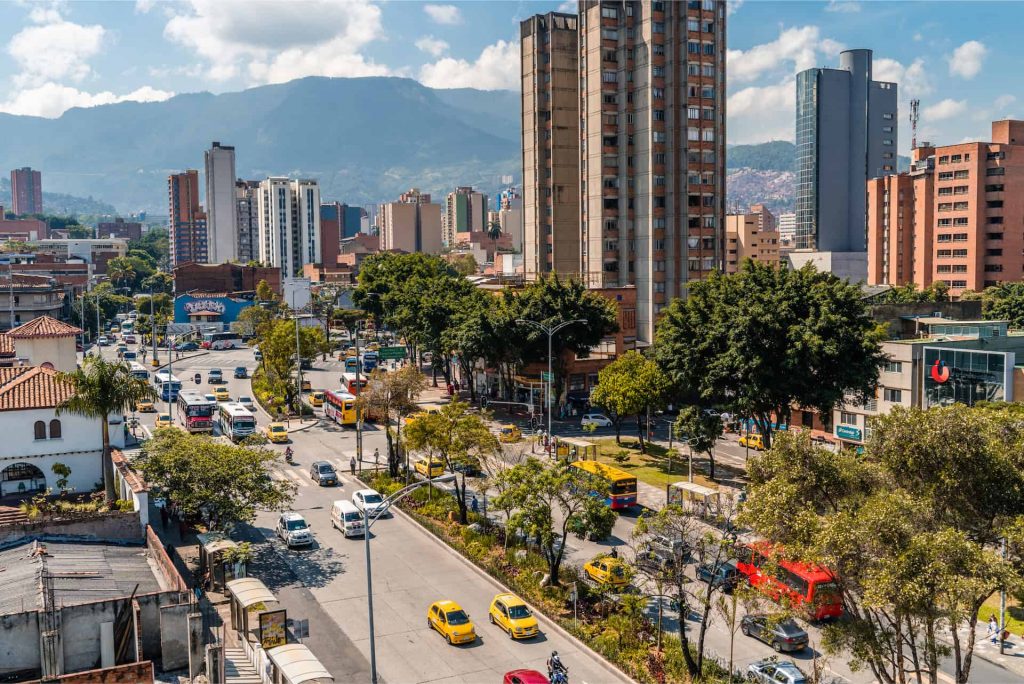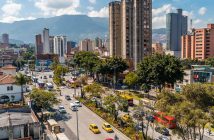Weather events are becoming more unpredictable, more intense and more damaging, posing huge challenges in both preparing for and recovering from their growing impact, says Jeremy Kelly, Global Director of Cities Research at JLL

From extreme heat across southern Europe to the heaviest rainfall on record in Shenzhen and Hong Kong, to flooding in Brazil and cyclones devastating parts of southern Africa, cities face unprecedented physical risks.
Four in five cities across the world now face significant climate hazards such as heatwaves, floods and droughts, according to non-profit CDP, which surveyed 998 cities. Much of this extreme weather is down to a changing climate, and in the latter part of 2023, it’s coupled with the cyclical effects of El Nino.
Many cities are facing multiple threats from extreme weather. While they currently establish longer-term resilience plans, they’re also having to deal with the immediate consequences of unprecedented and costly weather events.
Changing weather patterns have huge implications for real estate and the people that live in cities. For nearly a third of cities surveyed by CDP, climate-related hazards pose a threat to at least 70% of their populations.
More than 90% of the world’s largest companies will have at least one asset – offices, factories, warehouses or data centers – financially exposed to climate risks such as water stress, wildfires or floods by the 2050s, according to S&P Global.
Standing up to the heat
Rising temperatures have broken records for longer and more intense heatwaves in multiple urban areas in recent years. Cities, in response, are implementing a range of policies and measures to cool their streets.
Being prepared is critical. Heatwaves are a growing issue for cities, often piling pressure on aging energy infrastructure to keep buildings cool through air conditioning. In turn, this is adding to carbon emissions (unless energy comes from renewable sources), fuelling longer-term global warming. Instead, nature-based solutions can help to cool urban areas in a more environmentally friendly way.
Medellin in Colombia reduced urban heat island effects by 2℃ in three years by creating 30 green corridors. The tree-shaded routes, featuring tens of thousands of native trees and tropical plants, includes new bike lanes and walkways across the city.
It’s not just about planting trees; it’s also about keeping them alive in a changing climate. As part of Paris’ plans to plant 170,000 trees by 2026, it is growing a variety heat-resilient species in different locations depending on their water and sunlight needs.
Traditional city infrastructure is also undergoing a rethink. South Korea’s capital Seoul removed a major elevated thoroughfare through its centre, opening up access to the river and lowering urban heat by at least half a degree Celsius. Vienna in Austria has developed its cool streets initiative with four permanent and 18 pop-up streets featuring a mixture of light-coloured road surfaces with traffic restrictions, “fog showers” on hot days, water features and tree cover.
Roofs, too, are coming into focus. Many cities have introduced legislation requiring green roofs on new, and sometimes, existing buildings. Some cities are providing financial incentives to install green infrastructure. Hamburg in Germany subsidizes green roofing measures with grants up to €100,00 while New York has revamped its green roof tax abatement program.
As a different tactic, cities such as New York and Los Angeles are painting rooftops white to reflect sunlight.
Resilience measures need to be more explicitly incorporated into existing building codes and city-level regulations. Take Japan, for example, where they have very rigorous building codes relating to earthquakes and they’re ahead of the curve on cyclones. We need to expand that thinking around wider resilience in city regulations. Many buildings are unprepared for the climate risks they now face and owners don’t understand the impact until it’s too late.
Turning the tide on flooding
Heavy rainfall is a critical threat facing many of today’s cities. Research from C40 looking at almost 100 member cities, found flooding could cause $64 billion of damage to urban areas each year by 2050, even with current levels of flood protections in place.
Meanwhile, non-profit First Street Foundation and engineering firm Arup identified 730,000 retail, office and multi-unit residential properties at annualized risk of flood damage in the U.S. costing over $16.9 billion a year by 2052.
Some cities, especially those in coastal areas, are already taking pre-emptive measures. Shanghai, New York and Cardiff are improving their “sponginess” by implementing inner-city gardens, improved river drainage and more vegetation.
After a 2011 rainstorm which cost around $1 billion in damages, Copenhagen constructed its Enghaveparken. Located at the bottom of a hill, it contains numerous chambers to hold and safely manage heavy rain. Rotterdam’s Watersquare Benthemplein, equally transforms from a sunken public plaza and basketball court into a major stormwater basin during heavy rain.
The storms that often bring heavy rain are also causing disruption to infrastructure and business as usual operations. It’s leading some cities to invest in microgrids, self-sufficient energy systems that can generate and store their own power and distribute it locally to connected buildings.
In Columbus, Ohio, a severe storm in 2022 left hundreds of thousands of residents without power for nearly a week. The city recently installed the first of five planned microgrids with 100 kW of onsite solar generation and 440 kWh of battery energy storage. San Diego is likewise investing in eight microgrids to support both short-term resilience and its longer-term goal of being powered 100 percent by renewables by 2035.
Today’s cities need to be willing to think boldly about potential resilience measures and collaborate widely to share knowledge about what is working. Cities like Melbourne, Sydney, Amsterdam and Paris have been pioneers in developing climate resilience strategies but as climate risks continue to mount, even these will need to evolve. No city can afford to be complacent about what increasingly extreme weather means for their buildings or people.








